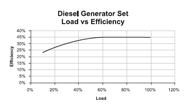Telecom today has penetrated much deeper into India in comparison to electricity. Network availability is of prime importance to any telecom operator. However this is quite challenging owing primarily to non availability of good quality grid power supply at remote locations. Thus, Indian telecom relies on Diesel Generator sets to provide greater than 99.95 per cent uninterrupted power uptime of telecom service, as these are the most reliable commercially available energy source. Despite availability of this source for many years there are multiple challenges in maintaining the network running, like:
- Frequent Diesel filling at remote locations;
- Regular Maintenance for 100 per cent uptime of DG sets;
- Variable load during the day.
Load at telecom site generally comprises of Equipment load, Battery Charging load and air conditioner load. With new generation BTS requirement of air-conditioner is going down and thus key load is only Battery & BTS equipment. Most of the telecom sites are equipped with lead acid batteries, for which power requirement keeps on reducing with increase in battery state of charging. Also BTS load keeps on changing in line with usage of voice and data. Unlike Battery bank load which changes from full load to negligible (100 per cent to 0) the variation in BTS load is around 40 per cent from peak to trough. Combining these two the peak load requirement at telecom site is around 4-5 times of min load requirement.
Due to this high variation in load requirement, it becomes very difficult to optimally size the Diesel Generator sets. Ideally DG sets should be run at 60-80 per cent of the rated capacity at which the diesel engine delivers the maximum efficiency but in telecom sites DG sets are sized to meet the peak requirement which runs at reduced efficiency during the low load times.
To meet this challenge of load variation and poor efficiency a solution has been developed along with DG OEM which helps in keeping the efficiency curve almost flat, i.e., highest efficiency irrespective of load. This is done by electronically controlling the speed of the engine depending upon the load unlike conventional DG which runs at fixed speed irrespective of load.
This resulted into variable frequency AC power which is converted into DC power using the power electronics equipment available at telecom site. This has been done due to the fact that all telecom equipment runs on DC power.
Lower speed operation of DG sets results in high efficiency in DG sets which means
lower diesel consumption and hence this technology helped telecom companies to meet all three challenges related with DG operations. i.e.,
-
Lower Diesel Consumption – Lower Diesel Filling cycle
-
Lower speed helped in lower wear & tear and higher uptime of DG set along with less noise
-
High efficiency at all load points.
This article has been authored by Sachin Gupta, DGM – Technical Services, Bharti Infratel Limited



Leave a Reply
You must be logged in to post a comment.